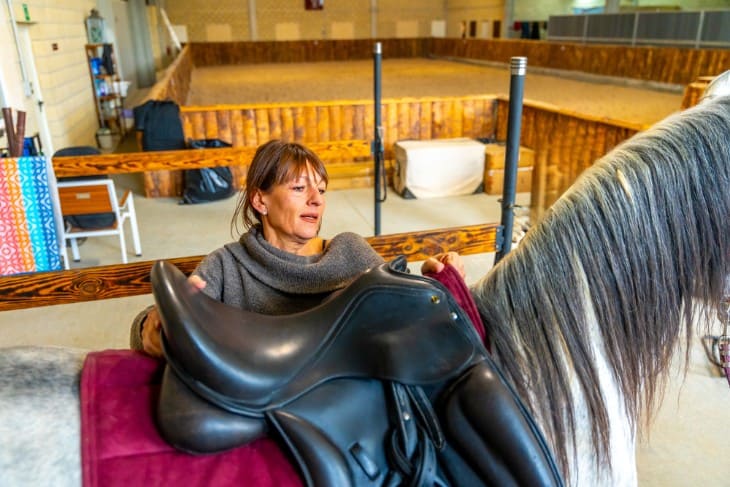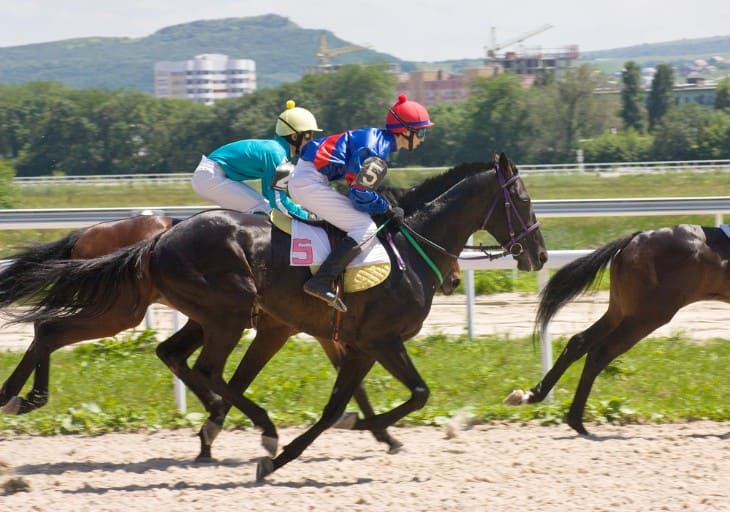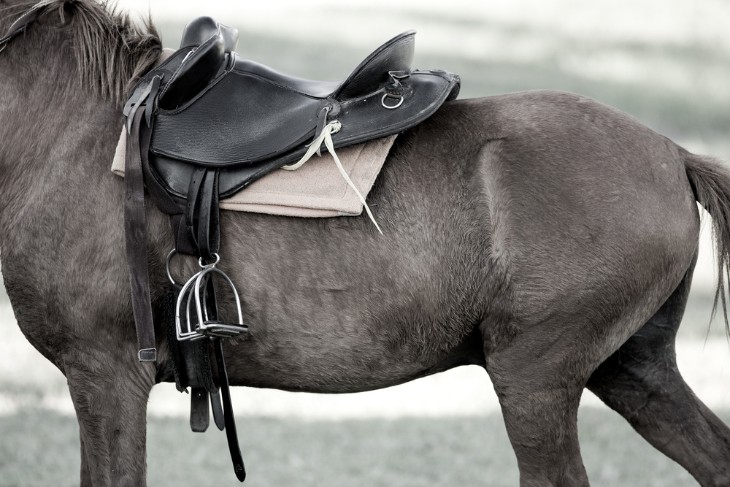- The Early Days: Basic Necessities for Rider and Steed
- The Innovation Era: Introduction of Specialised Equipment
- The Modern Age: Technology Meets Tradition
- The Impact of Equipment on Performance and Safety
- The Role of Equipment in the Spectacle of Horse Racing
- Sustainability and Ethics: The New Frontier in Horse Racing Equipment
- The Integration of Data Analytics in Horse Racing Gear
- Customisation and Personalisation in Racing Tack
- Final Summary
There have been many changes in horse racing which was originally a game of tradition and culture. It ranged from dust-filled plains to the glitzy high-stakes events today whose one constant is that of speed. The discovery and upgrading of racing gear are central to this purpose. From saddles, bits, bridles and more technologically advanced innovations, this equipment plays a key role in enhancing safety, performance and the overall glamour aspect of the sport.
This investigation explains how horse racing equipment has evolved, identifies important stages in its development as a sport and emphasises the correlation between a rider and a horse which can only be brought about by the right gear.
The Early Days: Basic Necessities for Rider and Steed
During those first days when horse racing started out as an activity it was not much demanding in terms of gear. Riders used what they could easily make from scratch or find readily available. They concentrated on keeping close contact with their horses; thus, they went for less complicated gadgets that would not interfere with their movement during races. The main stuff for example included leather saddles, simple bridle heads and plain bits because they were lightweight so as not to interfere with a horse's natural pace.
Leather saddles were basic but functional; there wasn't any extra padding or support as we see today. They helped riders stay seated throughout their races on top of their horses. The bridles and bit also assisted riders in guiding their animals around tracks but were nothing more than simple layouts to guarantee that the commands made by riders would reach horses without causing pain.
For instance there was not much variety in horse racing equipment at that time since jockeys had to work with what they had; hence it required very special skill for them to understand each other through such simple gears to get better results for them. This means that it depended on how good jockeys became at interpreting equine behaviour and recognizing how to use the simple gear to get the best possible performance from their animal. It was then all about the rider's skill and what nature had given that particular horse.
In that case, going fast was always important but they also knew that this had to be done without hurting their horses so they made a choice of equipment that would ensure such. There were two main considerations behind buying specific types of gear: it should not weigh too much on its back while being strong enough for races. This balance was key to doing well in the early days of horse racing.
The basicness of these equipment formed a foundation for the sport even though they did not go beyond this point in time with regard to horse racing as training filled with various acquisitions played a big role in this still.
The Innovation Era: Introduction of Specialised Equipment
As horse racing became more popular, there was an increase in demand for better equipment. This led to a period of great change and innovation. The 18th and 19th centuries were exciting times because people began making specialised tacks for racing. This represented real progress through the development of lighter and sleeker racing saddles which resulted in swifter and nimbler horses; similarly, improved bridles and bits made control over velocity and direction easier between contests.
Safety was now becoming a bigger concern as well. This meant that riders had to wear goggles to protect their eyes. If they fell off, helmets were designed to ensure the safety of riders. These changes indicated that people started thinking more about safety. It was not just all about speed anymore. Riders and horses should be safe as well.
This era also saw the advent of protective gear for horses. In this case, boots and wraps are used to protect horse legs from damage. The result is fewer injuries. Races ceased being mere speed tests but were also about ensuring that horses could race again.
The age of innovation changed horse racing greatly. Equipment became more than tools; it became a way to improve sports activities and games. Thus, lighter saddles and better bridles made races more exciting while safety gear helped every person involved in them.
Horse racing equipment stopped being simple anymore; now it was specialised and done with care. This period also laid the foundation for even further future developments since it demonstrated how horse racing could be both thrilling and safe with proper equipment.

The Modern Age: Technology Meets Tradition
In modern times, horse racing has witnessed the combination of traditional customs and new technological advancements which have led to massive changes within the game. Presently, we make use of materials and technology that never existed back then in history thus making our gears improved for both the rider as well as the horse like synthetic saddles instead of leather ones which are hard-wearing, long-lasting, all-weather tolerant items.
However, technology has continued to influence helmet innovations for increased safety in eventing competition due to materials such as carbon fibre being deployed into production processes thereby increasing strengths in protection against fall incidents thus steel helmets are useful during such moments because they can absorb shock upon collision with hard objects on or off the ground.
There is a lot of equipment that has been improved. In this case, the best examples are boots and wraps for horses. Basically, these provide better protection of legs than their predecessors did, which is another reason why we take so much care in racing.
Technology has also led to new means of understanding horses better through heart rate monitors and GPS trackers. It is nowadays possible to find out how a horse is doing at any given time thanks to tools like these. This implies that training horses can be done more effectively while keeping them healthy. Formerly, we used to guess what was happening with our animals but presently a horse's condition can be ascertained from vital signs.
In modern times there are new gears and technologies which are helpful for making horse races very interesting and secure as well. The sport has become better through new gear and technology in various ways including taking good care of horses and riders while entertaining fans during races. This is an indication that despite changing its ideas, horse racing still embraces its traditions as well. Hence it remains one of the most thrilling moments in sports life when past times merge with today’s reality.
The Impact of Equipment on Performance and Safety
The right horse racing equipment makes a difference especially in performance enhancement since they boosts both riders' and horses' capabilities by ensuring their safety too. Here's how:
- Saddles That Fits: Well-fitted saddles make it easier for horses to run because they distribute weight evenly. This minimises the risk of injury and discomfort during races., A well-fitted saddle is a comfortable seat for a rider; enabling them to stay with the horse and get more control of it. The horse can just run without any complications when its saddle fits him well.
- Shoeing Techniques: Modern shoeing techniques on the other hand, improve traction and reduce the chances of slipping while racing. Horses can therefore run at a higher speed without falling down. Good shoes are like trainers for horses enabling them to have better grip to go faster. It’s very much like wearing suitable footwear in a race.
- Safety Gear: Helmets and safety vests protect riders from injuries if they fall. This makes racing safer for jockeys. Helmets and vests serve as bodyguards for riders in case of accidents taking place.. Safety gear is always required in order to have riders still involved in the competition.
Safety Improvements:
- Leg Protection: Boots and wraps help keep horses’ legs safe while running through the racetrack. They provide support as well as minimise damage risks associated with leg injuries. Just like athletes wear knee pads, horses wear leg protection while they are running.
- Comfortable Bits: Modern bits allow riders to control their horses conveniently without any pain inflicted on pets that ensures smoothness and security throughout the race” (para 19). Bits and bridles represent steering mechanisms used by riders when directing their steeds in any direction thereby helping this animal achieve all its set objectives during racing events without hurting themselves or going off-course bravely.”
- Protection for Riders: Goggles and helmets safeguard riders' eyes and heads, reducing the risk of accidents and injuries. Goggles and helmets are like shields for riders. They keep them safe and able to focus on the race.
The Role of Equipment in the Spectacle of Horse Racing
Horse racing isn't just about speed and competition; it's also about the spectacle. The equipment used in horse racing plays a significant role in creating this visual spectacle. Here's how:
- Vibrant Silks: Riders wear colourful silks during races. These bright and distinct colours make it easy for spectators to identify their favourite horses. Imagine a sea of beautiful, brightly coloured shirts on the track. Each one represents a different horse and its rider. It adds excitement and visual flair to the race.
- Custom Tack: Saddles and tack are often custom-designed with intricate patterns and designs. This adds a touch of elegance and artistry to the sport. Think of it like custom car designs. These unique patterns and designs make the equipment stand out and add an artistic element to the race.
- Shiny Equipment: Riders take great care to keep their gear polished and gleaming. This not only reflects their dedication but also adds a sense of grandeur to the event. Shiny gear is like a symbol of pride and excellence in horse racing. It showcases the effort and commitment of riders and trainers.
- Overall Aesthetics: The combination of colourful silks, intricate tack, and shiny gear creates an overall aesthetic that enhances the visual appeal of horse racing. It's like a well-orchestrated performance. The gear and the way it's presented add to the beauty and excitement of the race.
Sustainability and Ethics: The New Frontier in Horse Racing Equipment
Nowadays, people care more about how things affect the environment and animal welfare. This is true for horse racing too. The industry is moving towards using gear that is kind to the planet and fair to the horses. This means making saddles, bridles, and other equipment from materials that don't harm the earth. Some companies are using recycled materials to make their products. This reduces waste and helps the environment.
Ethics are also important. People want to make sure that horses are treated well. This includes using gear that does not hurt or discomfort them. There's a push for equipment that helps horses perform without causing them pain. This shows respect for the animals that are at the heart of the sport.
The move towards sustainability and ethics is changing horse racing for the better. It's making the sport more modern and responsible. Fans and participants alike can feel good about supporting a sport that cares for the environment and its animals. This shift is making horse racing more appealing to a wider audience.

The Integration of Data Analytics in Horse Racing Gear
Data analytics is becoming a big part of horse racing. This is thanks to new technology that can gather lots of information. Gear like sensors and wearable tech can track a horse's heart rate, speed, and more. This data is very useful. It can help trainers understand their horses better. They can see what works best in training and adjust their methods.
This tech also helps with the health of the horses. By monitoring vital signs, trainers can spot any problems early. This means they can keep their horses in top condition. It's a new way of doing things that puts the welfare of the horse first.
Data analytics is also changing how races are run. With all this information, strategies can be more precise. This can make races more exciting and competitive. It's a win-win for everyone involved. The sport gets more interesting, and the horses get better care.
The use of data analytics in horse racing gear is a sign of the times. It shows how modern tech can improve traditional sports. It makes horse racing more scientific and thoughtful. This is a big step forward for the sport.
Customisation and Personalisation in Racing Tack
As the horse racing industry evolves, so does the demand for customisation and personalisation of racing equipment. Owners, trainers, and jockeys now seek gear that reflects their style or the branding of their stables while still adhering to the functional requirements of the sport. Custom-designed saddles, bridles, and racing silks allow for a unique expression of identity on the track, enhancing the visual appeal of the sport.
Furthermore, personalised equipment is tailored to fit the specific needs and preferences of each horse and rider, potentially improving comfort, performance, and the overall racing experience. This trend towards customisation and personalisation underscores the blend of tradition and innovation that characterises modern horse racing.
Final Summary
As we look to the future, the evolution of horse racing equipment shows no signs of slowing. With ongoing advancements in technology and materials science, the potential for further innovation is boundless. The quest for speed, safety, and spectacle will continue to drive the development of new and improved gear, ensuring that the sport remains at the cutting edge of competitive sports.
As horse racing equipment evolves, so too does the sport itself, offering new challenges and opportunities for riders and horses alike. In this ever-changing landscape, the bond between horse and rider, enhanced and supported by their equipment, remains the true heart of horse racing.








